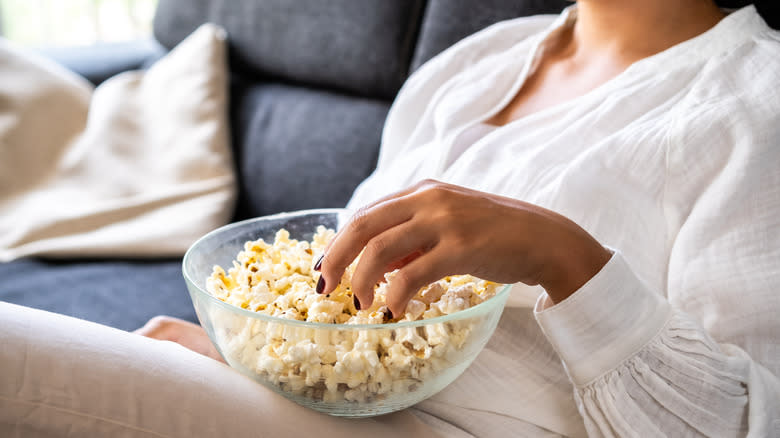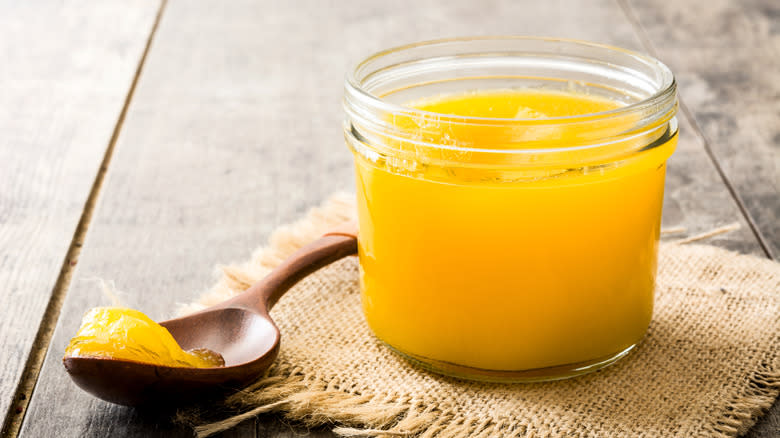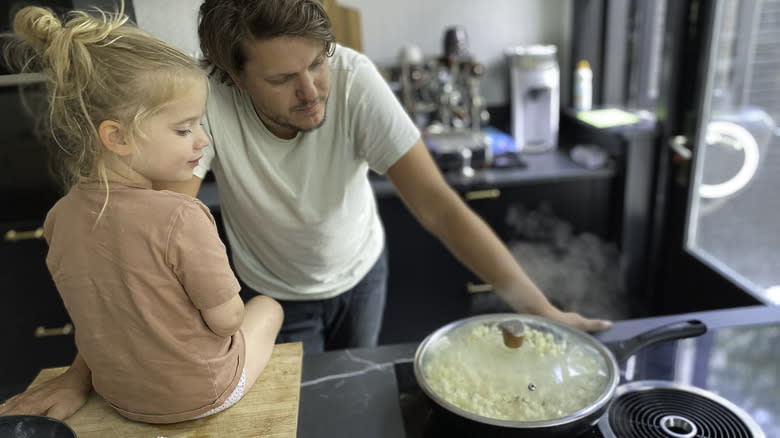The Best Ingredient To Make Your Popcorn Less Greasy

There are lots of great reasons to make popcorn on a stovetop instead of in the microwave. Along with greater affordability and improved quality, you'll also get to choose what type of fat you use when popping the corn kernels. In this case, using ghee instead of butter is ideal when you love the flavor of butter but want to avoid the soggy, overly saturated popcorn that leaves grease stains all over your fingers and clothing (and occasionally a household pet).
For the unaware, ghee is a type of clarified butter that results from a specialized cooking process. To get ghee, butter must be cooked until the butterfat breaks free from other components, meaning the water and milk solids. The remaining oil has a less cloying texture as compared to butter, and it also has an elevated smoke point. That makes it a perfect accompaniment to stovetop popcorn, as ghee is less likely to burn and leave your snack with an unpalatable singed flavor.
Read more: 7 Butter Brands You Should Buy, And 7 You Shouldn't
What Does Ghee Taste Like?

While clarified butter also consists of butterfat, there are some differences between ghee and clarified butter to be aware of. Ghee continues cooking even after the butterfat separates from the other ingredients. This extended cooking process is what gives ghee its beloved flavor. Because the butterfat becomes caramelized as it cooks, you can look forward to a more complex taste with ghee. Ghee has hints of toastiness and nuttiness that pair well with lots of foods, including popcorn. Accordingly, your snack will be less messy and a lot more flavorful.
If you're not accustomed to using ghee in place of butter, there are a few storage tips to keep in mind. Cold temperatures can have an unwanted effect on ghee's texture. Therefore, it's best to store ghee in a sealed container at room temperature to avoid graininess. However, you should protect it against high temperatures and moisture, as they can cause premature spoilage. Under the right conditions, some commercial brands of ghee can remain good for about six months.
Tips On Making The Tastiest Ghee Popcorn

You'll probably need to incorporate more ghee than you would butter when making popcorn. A liberal portion of ghee is the key to achieving a crunchy, satisfying texture sans the sogginess that would occur if you used the same amount of butter. You'll know you're on the right track when the softened ghee nearly swallows the uncooked popcorn kernels.
As for toppings, consider sprinkling a bit of nutritional yeast over your ghee-infused popcorn. Known for having a pleasantly nutty taste that recalls the flavor of cheese, nutritional yeast is not only delicious; this fermented form of the commonplace yeast used for baking is replete with essential nutrients and minerals, including protein, fiber, zinc, and vitamin B12. Nutritional yeast can also be used in numerous ways, as it pairs well with pasta dishes and is a good replacement for dairy when you want to create a cheese-free yet cheese-flavored sauce. By combining it with ghee popcorn, you can enjoy a wholesome snack that doesn't skimp on flavor.
Read the original article on Daily Meal

